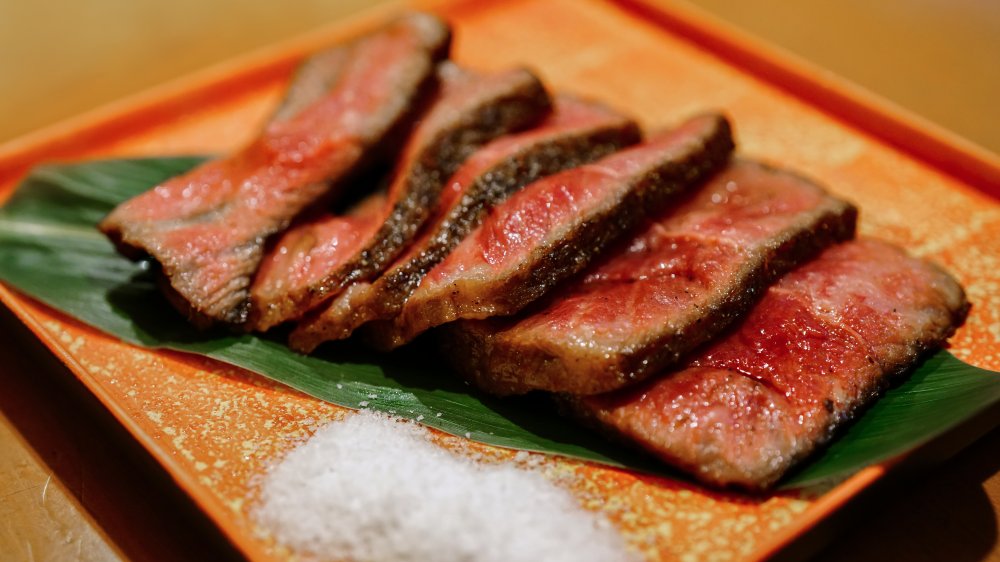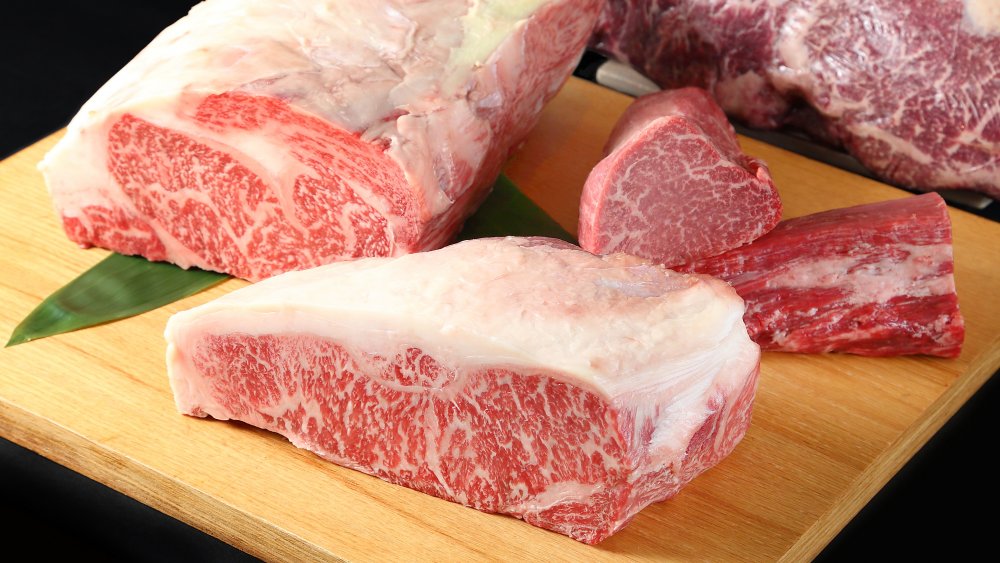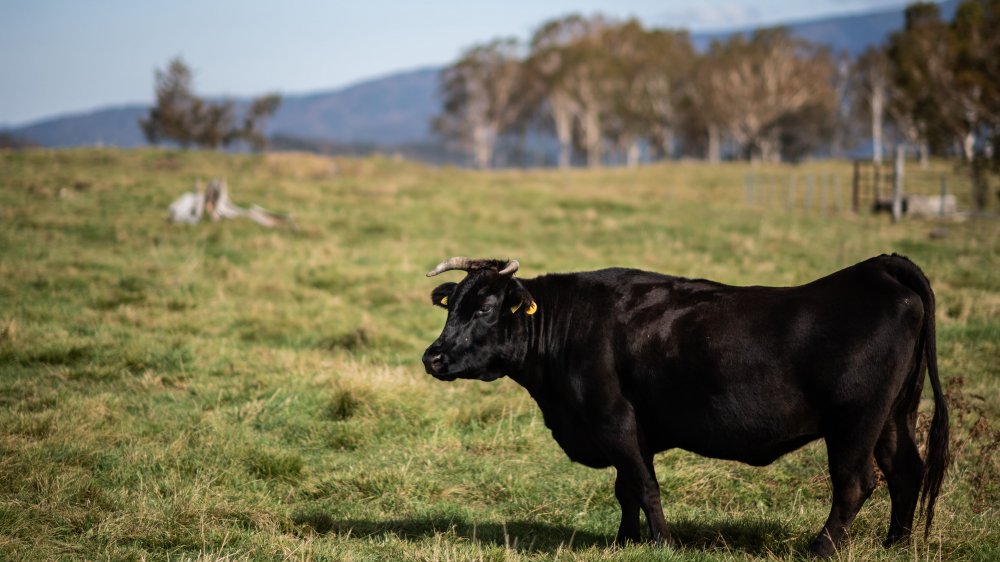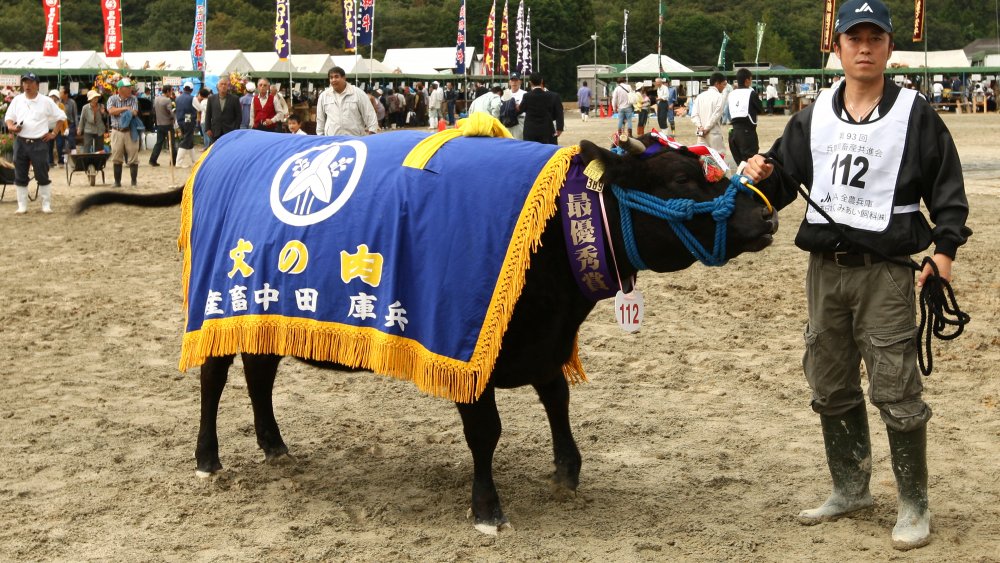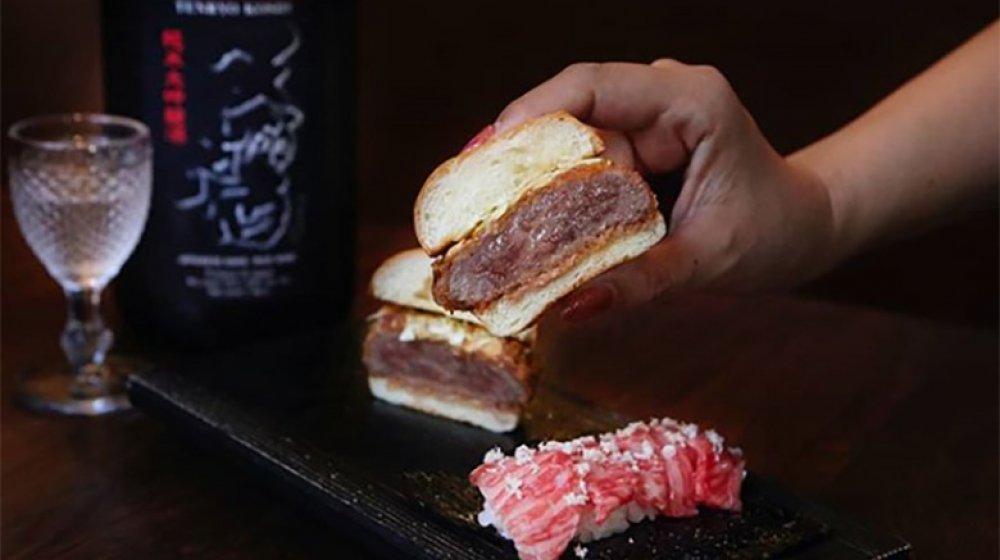Why Is Wagyu Beef So Expensive?
If there were a Mount Rushmore of beef, Wagyu would take up two spots. Don't expect to find this beef in your local fast food burger joint, though, as it's typically found on the menus of Japanese steakhouses. Meat-eaters with an appetite for flavorful beef often fork over a pretty penny for it too. For example, eight Wagyu steaks from Omaha Steaks will set you back $425. This is one cut of beef where you really, want to make sure you cook your steak properly.
Whether you buy Wagyu beef from a butcher or order it off the menu a fine steakhouse, it's always going to be expensive. As for why the price of this cow might make you say "Holy cow!" the easy answer, of course, is because it tastes so good. Obviously, though, it's a little more complicated.
The marbling tells a story and sets the price
If you were to take a raw slab of Wagyu beef and place it beside a cut of select beef — a grading by the USDA — you would notice a lot more marbling. Marbling refers to those fatty white streaks that are found throughout the beef. Think of these as beefy flavor crystals that impact both its tenderness and overall flavor (via Crowd Cow). A cut of Wagyu beef is going to have significantly more marbling than any U.S. prime cut of beef, and will taste fantastically delicious.
Here's the thing, though — this marbling doesn't simply happen by accident. There's a lot of work that goes into elevating Wagyu beef to the point where a cow can sell for hundreds or even thousands (via Business Insider). Japanese farmers start feeding young calves milk bottles by hand until they're around 10 months old. At this point, they're sold to another farmer who has the job of fattening them up with a special feed made of hay, wheat, and rice. Don't even think of feeding these cows corn — it's simply too high in sugar and promotes faster growth (via Lone Mountain Wagyu).
The young cows munch on this three times a day while exerting as little energy as possible. The idea is to pamper the cows in a stress-free environment because a happy cow makes for a better-tasting cow.
Wagyu beef comes from a special kind of cow
It's not just how the cow is raised that produces Wagyu steaks, but the actual cow itself. There are all sorts of cows out there, and some are more prized than others when it comes to what ends up on a steakhouse menu. Wagyu actually refers to a particular breed of cattle, and they all happen to be located in Japan. Naturally, a country that has near-complete control over a resource is going to demand a high price when other countries come knocking, and this exactly the case with Japan's Wagyu cows.
According to Reader's Digest, Japanese Black, Japanese Brown, and Japanese Shorthorn make up the three main categories of Wagyu — although there can be hundreds of offshoot varieties. The first Wagyu cattle came to the United States in the 1970s, and even today, there are only about 5,000 full-blooded Wagyu in the U.S. That's merely a fraction of a percentage of the 94.8 million cattle on American ranches.
Most of the Wagyu in the United States are of the Japanese Black variety, and Japan isn't even going to think about exporting their best Wagyu bloodlines. In fact, they've banned the export of Wagyu to the United States altogether — making it even pricier than it was already (via Library of Congress).
Wagyu beef can get really, really, expensive
Poke around a few U.S. livestock websites and you'll learn that you can buy a young black Angus cow for around $1,250. According to Business Insider, that's a serious bargain compared to the cost of a Wagyu cow which can be as much as $30,000 — on the low end. At an auction, Wagyu calves go for around 40 times the price of U.S. cattle and the prices for some varieties can be downright ridiculous.
Take the prized Matsusaka Wagyu from Mie Prefecture, part of Japan's Kansai region. The slaughtered cows are all virgins, which some claim makes the meat more tender, but regardless of whether or not that's true, the cows have sold for as much as $400,000.
Prepare to pay big if you want to try Wagyu
Because of its rarity and allure to foodies, restaurants that sell Wagyu always command a high price for it — even when it's fake. In 2016, a Toronto restaurant was busted for selling phony Wagyu (via The Daily Meal). Real Wagyu can be found in North American restaurants — however, eating a Wagyu hamburger isn't for those with a light wallet.
New York City Japanese restaurant SakaMai, for example, sells Wagyu beef sliders at $85 apiece. "Because Wagyu is so difficult to find in the U.S., yes, we do have a number of customers coming to us just to try the Wagyu," a representative for SakaMai told Business Insider.
